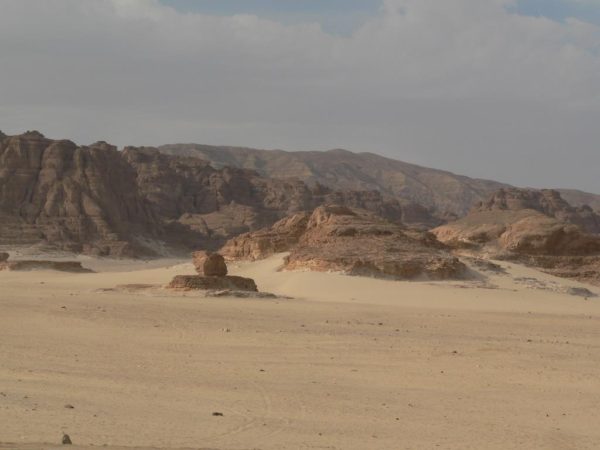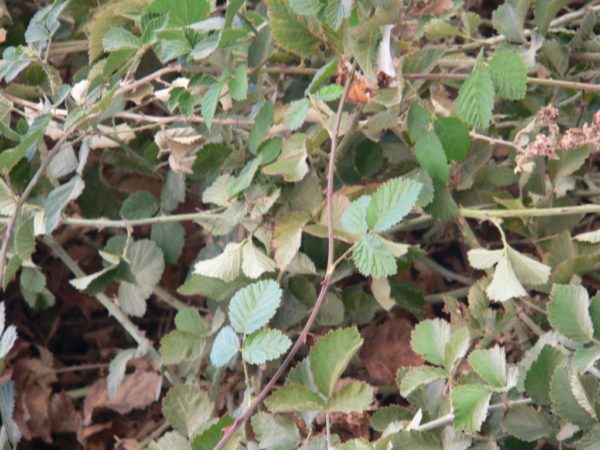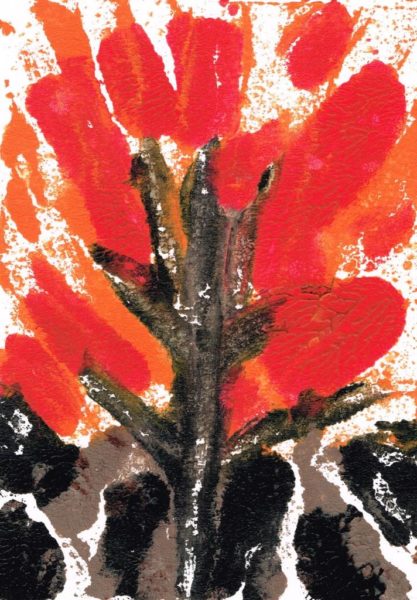 In January 2006, I was fortunate enough to be able to travel to Egypt on vacation. As part of the trip, our transportation included a bus trip across the desert and – in case you are wondering what the desert of the Exodus looks like – well this is it. It is austere, but still exhibits its own kind of desert beauty. We also visited St. Catherine’s Monastery, which is considered the historic site of the burning bush at the foot of Mt. Sinai. In addition to a photo of St.
In January 2006, I was fortunate enough to be able to travel to Egypt on vacation. As part of the trip, our transportation included a bus trip across the desert and – in case you are wondering what the desert of the Exodus looks like – well this is it. It is austere, but still exhibits its own kind of desert beauty. We also visited St. Catherine’s Monastery, which is considered the historic site of the burning bush at the foot of Mt. Sinai. In addition to a photo of St.  Catherine’s, here is a closeup of a bush that is reported to be connected to the burning bush through its root system. The actual part of the bush that burned is in a restricted area within the monastery. I thought it was kind of interesting that the
Catherine’s, here is a closeup of a bush that is reported to be connected to the burning bush through its root system. The actual part of the bush that burned is in a restricted area within the monastery. I thought it was kind of interesting that the  stems of the bush show three part leaves – perhaps it points ahead to the trinity?
stems of the bush show three part leaves – perhaps it points ahead to the trinity?
In any case, to get ready to go on this fabulous trip, I decided to read the book of Exodus and reflect on what it means to be a woman in exodus. The story begins with the Israelites, who were living as slaves to the Egyptians. Many Hebrew babies were saved from death by the shrewdness of two courageous and faithful midwives, Shiphrah and Puah, and Moses himself was drawn out of the waters of the Nile by the Pharaoh’s daughter. These events show that women played an essential role in the salvation history of the Israelites. And when he was grown, Moses was called by God to lead the people out of slavery. Change and struggle of any kind can be frightening and risky. How did the Israelites get their nerve to leave? And what did they use as their compass? In Exodus, we find it was the relationship they had with their divine patron Yahweh, “I am who am.”
 Sometimes change is our own choice and sometimes it isn’t, but either way it always comes. Exodus happens when we are no longer able to tolerate the status quo and God meets us there – enabling us to open ourselves to a journey of transformation, leaving behind the familiar and surrendering to the difficulties of exile.
Sometimes change is our own choice and sometimes it isn’t, but either way it always comes. Exodus happens when we are no longer able to tolerate the status quo and God meets us there – enabling us to open ourselves to a journey of transformation, leaving behind the familiar and surrendering to the difficulties of exile.
On this journey, while we are wandering around lost in our personal deserts, we learn that God provides for us and is always with us. “Be still and know that I am with you.” This phrase echoes in my brain frequently and speaks to me of a desert wisdom. It is similar to the assurance Yahweh gave Moses when they met at the burning bush. God said to Moses, “I will be with you” and then provided Moses with the help he needed.
Once moving forward through the desert, we may begin to doubt the presence of God or find that our images of God need to expand. In that time, we must find a way to be patient, sitting in the awkwardness that comes with transformation. And at the same time, it is essential that we cultivate a forceful persistence that keeps us looking inward to recognize the Being Within, as we walk the process and find a new home. Just as Yahweh gave manna and water to the Israelites, God promises to provide for us what we need for the journey. Being a woman in exodus means knowing that God is always with us, providing what we need. I have been to the desert and I know that it is true.
Artwork and Photo Credits: Julie Henkener.















Leave a Reply
Join the conversation by submitting a comment to this blog post below.